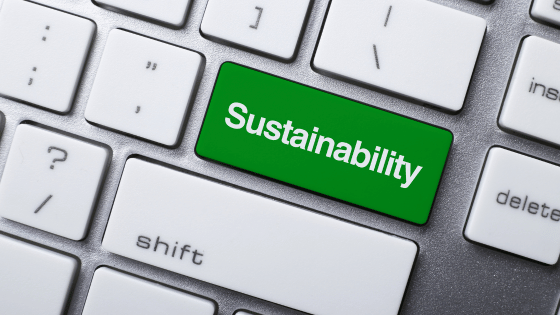
In the United States alone, there are more than 80 million tons of packaging waste generated each year. This staggering amount shows why greener moving practices are becoming essential. Premium movers in Greenwich are responding by offering solutions that make relocations smoother while helping protect the environment.
One effective approach is choosing full-service packing from trusted companies like Experia Moving. They use recyclable boxes, compostable fillers, and reusable crates to safeguard belongings without adding to landfill waste. By combining eco-friendly materials with expert organization, these movers provide clients with a stress-free experience that aligns with modern sustainability goals.
Using Recyclable and Sustainable Packing Materials
Eco-conscious movers prioritize materials that can be reused or recycled. Instead of traditional single-use cardboard and plastic wrap, many now opt for sturdy, reusable bins and paper-based padding. Some even partner with suppliers who provide compostable cushioning made from cornstarch. These alternatives protect items just as effectively as conventional materials while greatly cutting down waste.
Examples of Sustainable Materials
- Recycled cardboard boxes
- Compostable packing peanuts
- Reusable plastic totes
- Paper-based wrapping sheets
- Corrugated bubble wrap
Maximizing Truck Space to Lower Emissions
Efficient loading is another way movers reduce environmental impact. By carefully arranging boxes and furniture, movers can fit more items into each trip. This means fewer journeys, less fuel burned, and lower carbon emissions. Some companies use 3D modeling to plan truck layouts in advance, ensuring every inch of space is utilized effectively.
Reducing the number of trips directly cuts pollution. This approach not only benefits the environment but also saves clients time and costs related to multiple deliveries. A well-packed truck is an eco-friendly truck.
Minimizing Landfill Impact
Top movers are finding creative ways to avoid sending packing materials to landfills. They often offer take-back programs where clients can return boxes and crates after the move. These items are then cleaned, repaired if necessary, and reused for future jobs. By reintroducing materials into the packing cycle, waste is drastically reduced.
Some movers donate used materials. Schools, community centers, and art programs often accept clean packing supplies for storage or creative projects. This practice turns potential waste into useful resources for others.
Educating Clients on Green Moving Practices
Customer education plays a big role in reducing moving waste. Movers often provide guidelines on how clients can prepare for a move in eco-friendly ways. Suggestions include decluttering responsibly by donating unwanted items, packing efficiently to reduce material usage, and choosing recyclable supplies when doing any self-packing. For more on how awareness can shape sustainable choices, read this guide on making environmental awareness more widespread.
Offering these tips helps clients feel more in control. When customers understand the environmental impact of their choices, they are more likely to embrace sustainable habits during the move and beyond.
Combining Premium Service with Environmental Responsibility
Eco-friendly moving does not mean sacrificing quality. In fact, premium movers often enhance their service by adding green options. Clients still enjoy top-tier handling, organization, and care for their belongings, but with the added benefit of knowing their move is leaving a smaller environmental footprint.
This approach meets growing consumer demand for sustainability. More people are seeking businesses that align with their environmental values, and movers who integrate eco-friendly solutions stand out in a competitive market.
Practical Steps for an Eco-Friendly Move
To make your move greener, follow these simple actions:
- Request recyclable or reusable packing materials from your mover.
- Donate unwanted items to reduce waste.
- Ask about take-back programs for boxes and crates.
- Plan ahead to minimize last-minute purchases of non-eco-friendly materials.
- Choose a mover that prioritizes truck space optimization.
The Future of Green Moving
The moving industry is shifting toward sustainability. Advances in biodegradable materials, electric moving trucks, and smarter logistics will further reduce environmental impact. Greenwich movers who adopt these innovations now will be better positioned to serve eco-conscious clients in the years ahead.
Choosing an eco-friendly moving company makes a difference. Every box reused, every trip saved, and every recyclable item kept out of a landfill contributes to a healthier planet. As demand for greener services grows, so will the options for customers who care about both their move and the environment.
Final Thoughts
Eco-friendly full-service packing is more than a trend. It is a necessary step toward reducing waste and protecting the planet. Greenwich movers leading this change show that high-quality service and sustainability can go hand in hand. By selecting movers committed to these values, clients take part in shaping a cleaner, more responsible future for the moving industry.




















 No one wants to feel worried. But because ecological and ethical issues are considered by us while purchasing clothing or food, therefore the variables are coming to play for wine fans (and you may also check out for Lemadeleine website for more information about best wines).
No one wants to feel worried. But because ecological and ethical issues are considered by us while purchasing clothing or food, therefore the variables are coming to play for wine fans (and you may also check out for Lemadeleine website for more information about best wines).

 Ranked among the top causes of disability and sickness, mental illness is a health issue that is prevalent, and that’s the reason why you need to know about mental health billing by reading on ePsych Billing website. In reality, data from the World Health Organization shows that roughly one in four individuals globally will suffer from a mental illness at any time in their lives. When there are lots of clinical psychologists that do not understand mental illness and research workers, one thing is for certain.
Ranked among the top causes of disability and sickness, mental illness is a health issue that is prevalent, and that’s the reason why you need to know about mental health billing by reading on ePsych Billing website. In reality, data from the World Health Organization shows that roughly one in four individuals globally will suffer from a mental illness at any time in their lives. When there are lots of clinical psychologists that do not understand mental illness and research workers, one thing is for certain.
